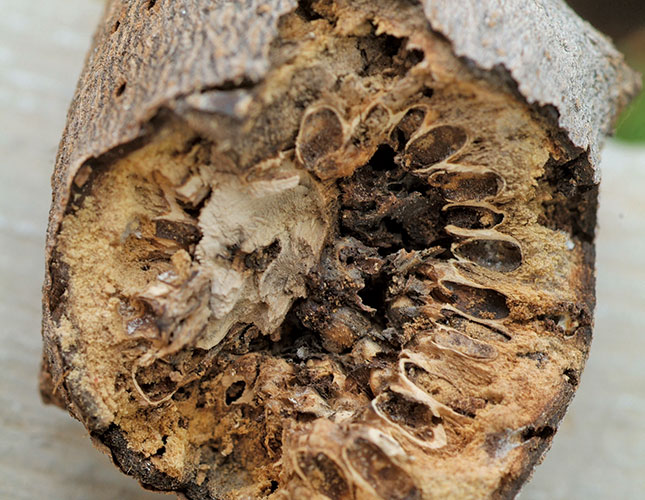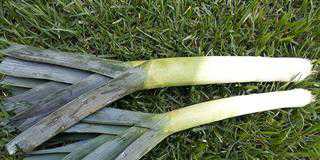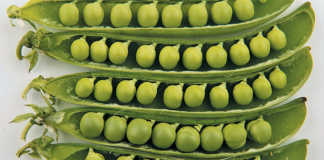
Abnormal growths in plants are usually due to galls. These can form on any part of the plant, and appear when the plant has been attacked by bacteria, viruses, parasites, fungi, mites, nematodes or insects.
They can also be an abnormal growth in the plant’s cell – a bit like cancer in a mammalian cell. Galls appear as growths on the plant and can cause leaves to curl and fall off or growth on a twig to cease.
Plant growth can be stunted, because the gall taps into nutrients the plant needs during the growing phase. Some galls can have a striking appearance. A cynipid wasp found in the USA produces a gall that looks like pink and white candyfloss.
Formation
This article provides a brief overview of those galls resulting from interactions with insects. As a rule, a gall forms when an insect or mite feeds on the plant, or lays eggs inside it.
These insects or mites are often tiny and difficult to see, so the damage is done before the pest is spotted.
The gall is the result of either mechanical damage (egg-laying) or the introduction of saliva into the plant by the adult insects or their larvae.
In the latter case, the saliva acts as a stimulant, increasing the plant’s normal growth hormone production.
The hormonal increase occurs at the site of the ‘bite’, resulting in an increase in cell size and/or an increase in cell numbers – leading to a gall. The gall protects the larvae and provides an easily accessible food source.
Shape and growth
The gall’s shape is determined by the chemical the insect releases while inside the plant. As well as producing growth-stimulating chemicals, many gall-forming insects also release an enzyme that converts the plant’s starch into sugar.
This substance can often be seen oozing from the gall in the form of honeydew which may be harvested by ants. As a rule, gall-forming insects attack the plant during its growth phase, when its nutrient levels and cell division peak. Galls seldom form in mature plant tissue.
When it is inside, as the organism begins to grow and feed, the gall gets bigger – and may continue to grow even after the organism has pupated, although the size of the plant will limit how large a gall can become.
Culprits
Organisms responsible for the formation of galls are many and varied, but typically include gall midges, gall wasps, gall-flies, psyllids (jumping plant lice), Eriophyid mites, some sawflies, certain beetles and aphid species.
A number of these organisms may over-winter on the host plant and then attack it with the onset of spring. For this reason, it may be useful to treat the plant with an insecticide just before winter to kill off the organisms.
Management
Although they may stunt growth, galls will not kill the plant and it’s usually best to simply leave them alone. Chemical applications are seldom effective unless they are administered while the insects or mites are still visible.
Once the gall has begun to form, it offers protection and spraying will have little effect. Weaker, less healthy plants are more prone to suffering from gall formation. Adequate watering, fertilising and pruning are therefore required.
Paul Donovan is a biologist currently based in Botswana, where he promotes the protection and use of biological control agents and advises farmers on the best ways to control crop pests.













